- 한국어
- English
- 日本語
- 中文
- العربية
- Español
- Français
- Deutsch
- Pусский
- Tiếng Việt
- Indonesian
By Honorary Reporter Dora Kolarszki from Hungary
Photos = Dora Kolarszki
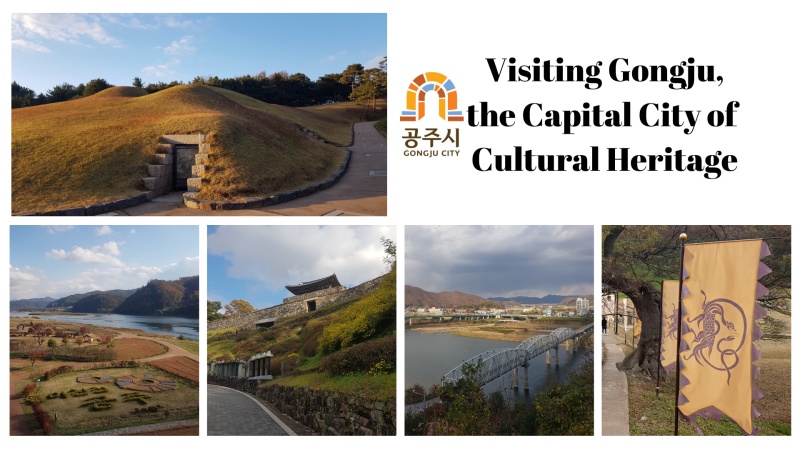
Gongju, Chungcheongnam-do Province, is around 130 km south of Seoul and rich in Korean cultural heritage. As an exchange student in Korea for the fall semester, I recently visited this fascinating place.
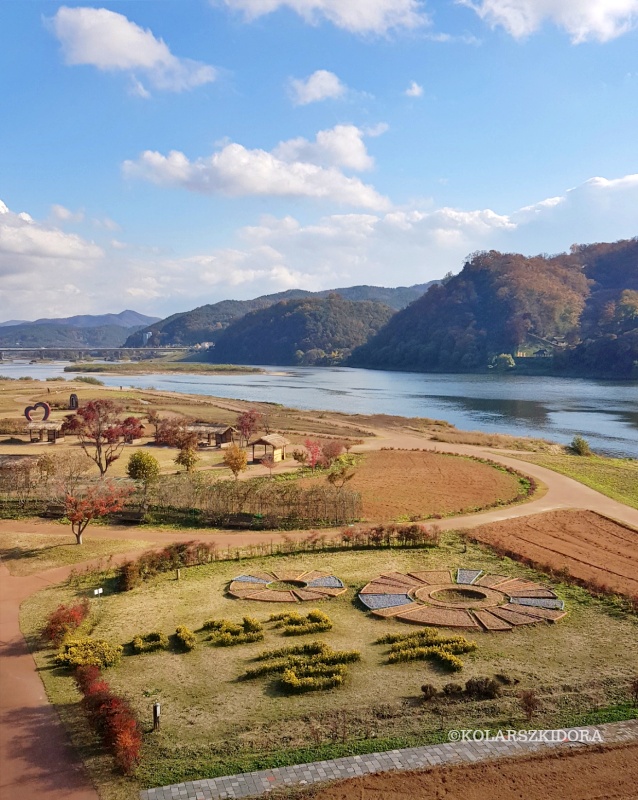
Riverside park by Geumgang River
Gongju was the capital of the Baekje Kingdom (18 B.C.- A.D. 660) from 475 to 538. Among the Three Kingdoms on the Korean Peninsula of that era, Baekje had the smallest territory but was huge in cultural prosperity. The kingdom was well known in East Asia for its metalwork and skilled craft artisans who created unique artifacts such as sophisticated crowns and decorated belts.
Most of central Gongju is designated UNESCO World Heritage as part of Baekje Historic Areas.
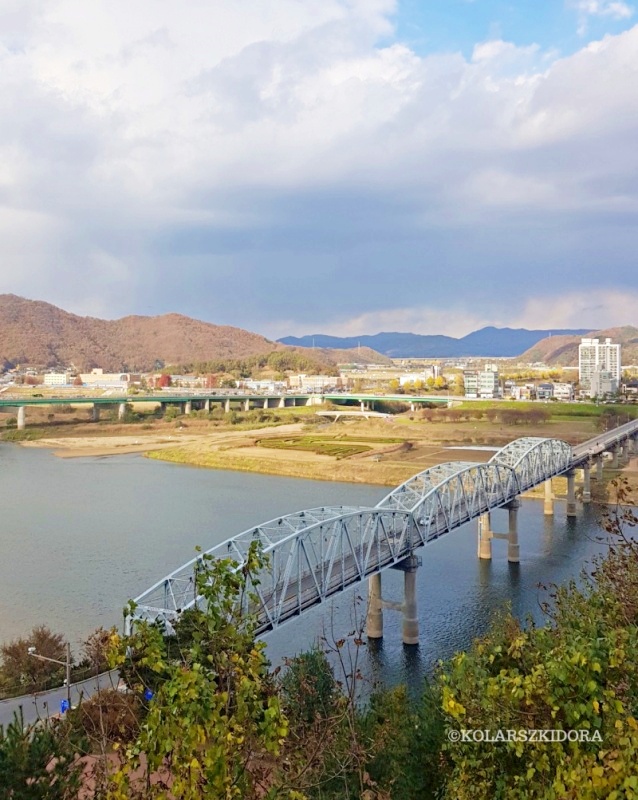
Gongju Iron Bridge
The bus fare from Seoul was KRW 12,000 and the journey was 90 minutes, but I saw breathtaking mountain views along the way.
My first stop was a riverside park by the Geumgang (Silk) River, Korea's third longest. The park leads to the Gongju Iron Bridge, the country's longest south of the Hangang River with one lane for cars leading to the city's southern area and a pedestrian path. The view of the river while crossing the elevated bridge is amazing.
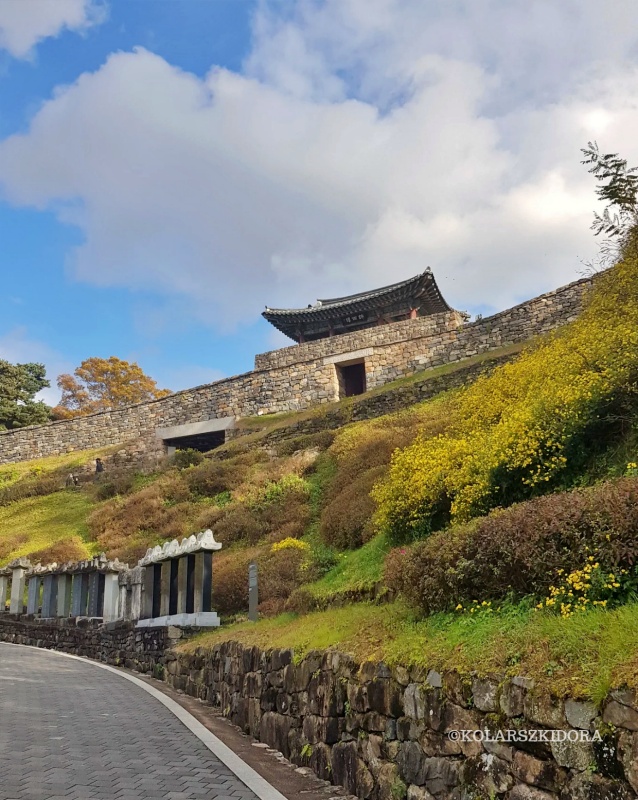
Geumseoru, western gate of Gongju Gongsanseong Fortress
On the other side of the banks is Gongju Gongsanseong Fortress, which is clearly visible from afar thanks to its curvy walls and pavilions. The fortress was built during the Baekje period using earthen fortifications; it was later strengthened and reconstructed with stone elements during the Joseon Dynasty. The wall is over 2,600 m long and rises 110 m above sea level.
Walking along this steep wall offers a unique experience and amazing views of the Geumgang, but visitors should be careful as the edge of the fortress ends abruptly. The fortress is considered the hub of Baekje civilization as it contains the presumed site of the royal palace and the banquet facility Imryugak.
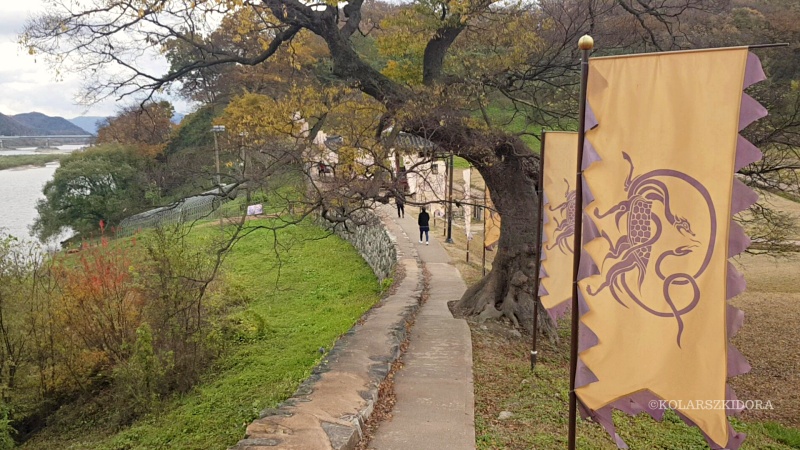
Black tortoise flags at Gongsanseong's northern gate Gongbukru
The wall connects the four gates of the fortress that align with the four cardinal directions. Flags with the motifs of the four guardians are at each gate: the blue dragon at the eastern gate Yeongdongru; the white tiger at the western gate Geumseoru, which also has the entrance; the red vermillion bird at the southern gate Jinnamru; and the black tortoise at the northern gate Gongbukru.
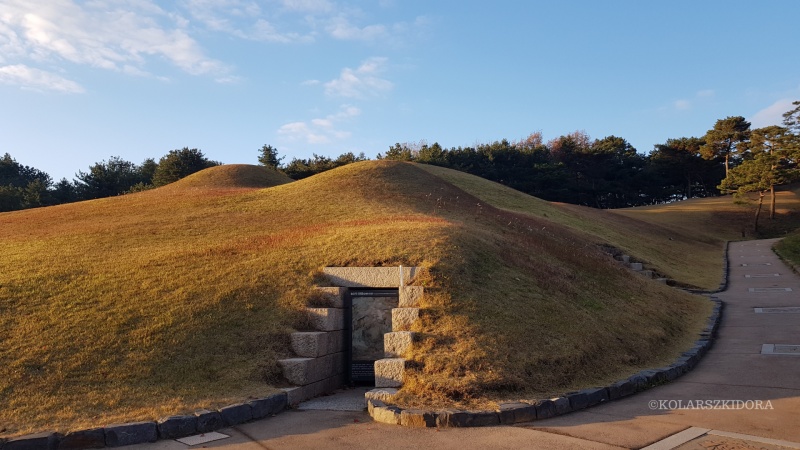
Royal Tombs of Songsan-ri
From Gongsanseong, take a 30-minute walk to Muryeongwangneung, also known as the Royal Tombs of Songsan-ri, and see Hanok and wall paintings on the way.
Gongju is also famous for chestnuts, so try a chestnut-infused drink or dessert at a cafe near the fortress.
enny0611@korea.kr
*This article is written by a Korea.net Honorary Reporter. Our group of Honorary Reporters are from all around the world, and they share with Korea.net their love and passion for all things Korean.